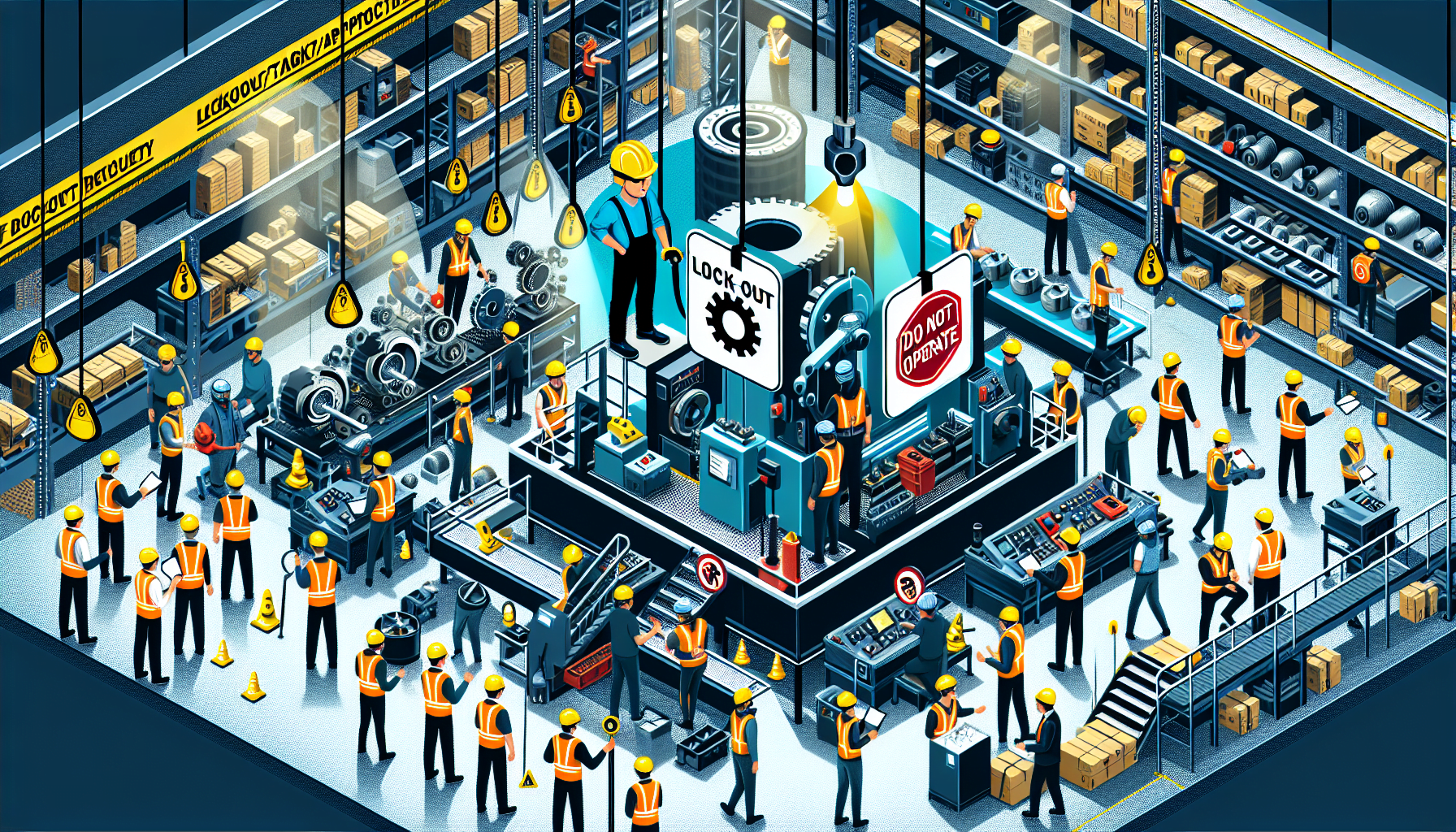Warehouse safety is of utmost importance to ensure the well-being of employees and the smooth functioning of operations. In any warehouse setting, there are numerous hazards that workers may encounter on a daily basis. From heavy machinery to potentially harmful substances, it’s crucial to have proper safety protocols in place to minimize the risks associated with these hazards. One essential safety procedure that every warehouse should implement is Lockout/Tagout, or LOTO.
What is Lockout/Tagout (LOTO)?
Lockout/Tagout procedures are used to control hazardous energy sources during maintenance or servicing of equipment. The purpose is to prevent the unexpected energization or start-up of machinery or equipment, which could cause injury to workers. LOTO involves the use of locks and tags to clearly indicate that a machine or equipment is undergoing maintenance and should not be operated.
The Occupational Safety and Health Administration (OSHA) developed specific regulations for Lockout/Tagout procedures to ensure the safety of workers in various industries, including warehousing. These regulations define the steps and requirements that employers must follow when implementing LOTO procedures in their facilities.
The primary goal of LOTO is to protect workers from the release of hazardous energy by controlling all potential sources of energy, such as electrical, mechanical, hydraulic, pneumatic, chemical, and thermal. By isolating these energy sources, workers are protected from unexpected start-ups, releases of stored energy, or the activation of equipment during maintenance or repair activities.
Implementing LOTO procedures in a warehouse setting involves a systematic approach. It typically includes the following steps:
- Identifying all energy sources: It is crucial to identify and document all energy sources that can pose a threat to workers’ safety. This includes energy stored within equipment or machinery, such as electrical, mechanical, or hydraulic energy.
- Creating a written LOTO program: A comprehensive written program should be developed that outlines the specific steps and procedures to be followed. This program should include detailed instructions on how to isolate energy sources, lock and tag equipment, and verify that the system is safe to work on.
- Training employees: All employees who may be involved in maintenance or repairs should receive proper training on the LOTO procedures. They should understand the purpose of LOTO, how to identify energy sources, and how to properly lock and tag equipment.
- Performing equipment shutdown: Before maintenance or repair activities are initiated, equipment must be properly shut down, and all energy sources must be isolated. This may involve turning off power sources, shutting valves, or taking other necessary actions to ensure the equipment is in a safe state.
- Locking and tagging: Once equipment is shut down, it should be locked and tagged using appropriate devices. The locks and tags should only be removable by authorized personnel after all maintenance or repair work is completed.
- Verifying equipment safety: Before any work is performed, the equipment must be tested to ensure that all energy sources have been effectively isolated and that there is no residual energy present. This verification step is crucial to prevent accidental releases of energy.
By implementing these LOTO procedures, warehouses can minimize the risks associated with maintenance or servicing activities and protect the safety of their employees. However, it is essential to regularly evaluate and update the LOTO program as needed to ensure its effectiveness.
Additionally, to ensure the overall safety of the warehouse environment, it is recommended to conduct regular warehouse safety evaluations. These evaluations help identify potential hazards, assess the effectiveness of safety protocols, and implement necessary improvements. Companies like HCO Innovations offer comprehensive warehouse safety evaluation services to help businesses ensure a safe working environment for their employees. To learn more, visit HCO Innovations – Warehouse Safety Evaluation.
In conclusion, implementing Lockout/Tagout procedures in warehouse safety is crucial for preventing employee injuries and accidents. By following OSHA regulations and implementing LOTO procedures, warehouses can effectively control hazardous energy sources during maintenance or repair activities. It is also essential to regularly update and evaluate the LOTO program to ensure its effectiveness. Conducting regular warehouse safety evaluations further enhances safety measures and helps identify areas for improvement. Prioritizing warehouse safety ultimately leads to a safer working environment and better overall productivity.

